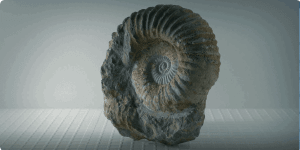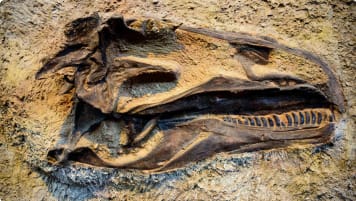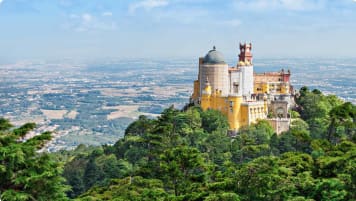Argentina Dinosaur dig including Titanosaur small group tours
Small group tour for senior and mature couples and solo travellers to explore the Titanosaurs the largest Dinosaurs to walk the planet. Their skeletons have recently been discovered in Argentina. This program spends 20 days travelling to visit and experience the dig sites where much of Argentina’s paleontological history has been found, Patagonia. With local paleontologists and guides providing an insight into this remote part of the country you get a unique opportunity to learn first hand about the research on the Argentinian Dinosaur collection.
From $19,950NZD
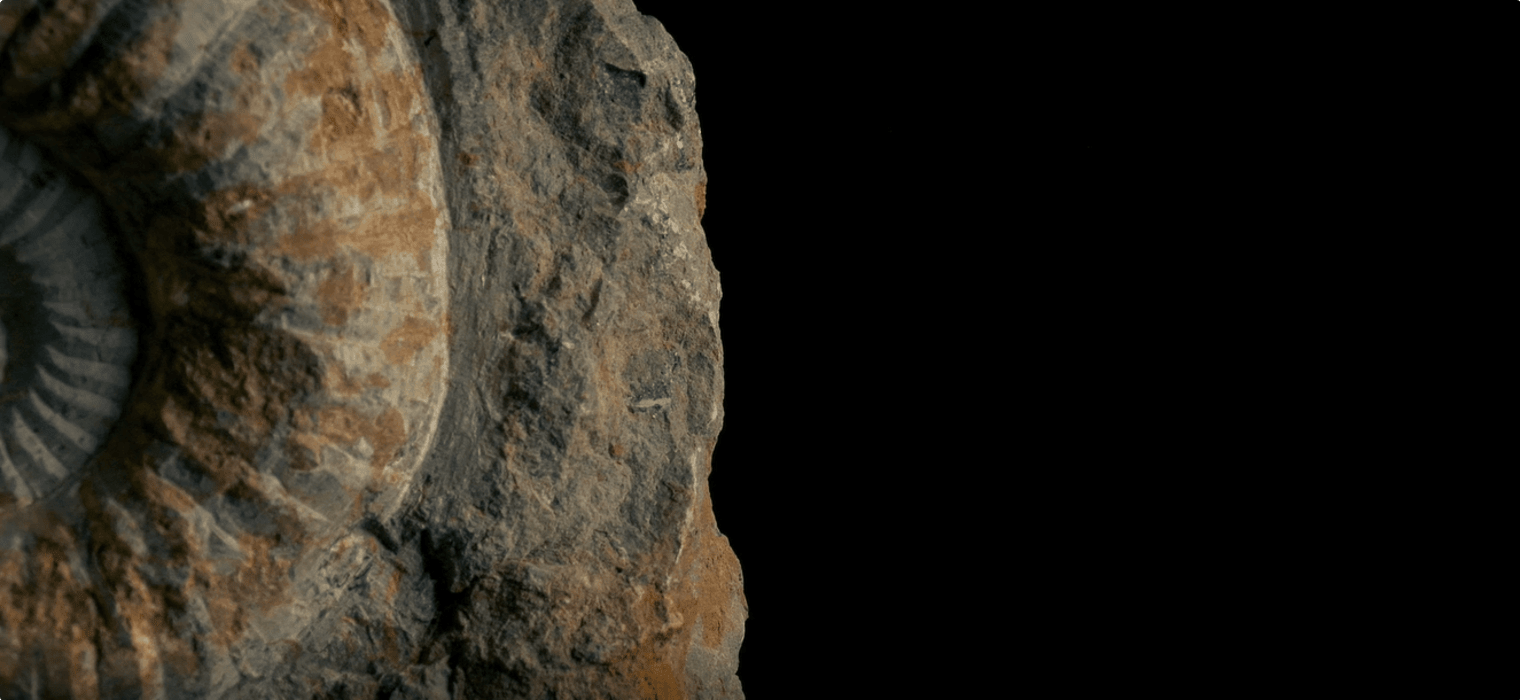
Highlights
- 1. Hone your skills in cleaning and classification of dinosaur fossils.
- 2. Experience the most Paleontological Museums in South America.
- 3. Explore the impressive landscape of the Cordillera Mountain and Nationals Parks.
- 4. Visit the Egidio Furiglio Museum and learn from Dr. Diego Pol, the famous paleontologist who discovered the world's greatest dinosaur.
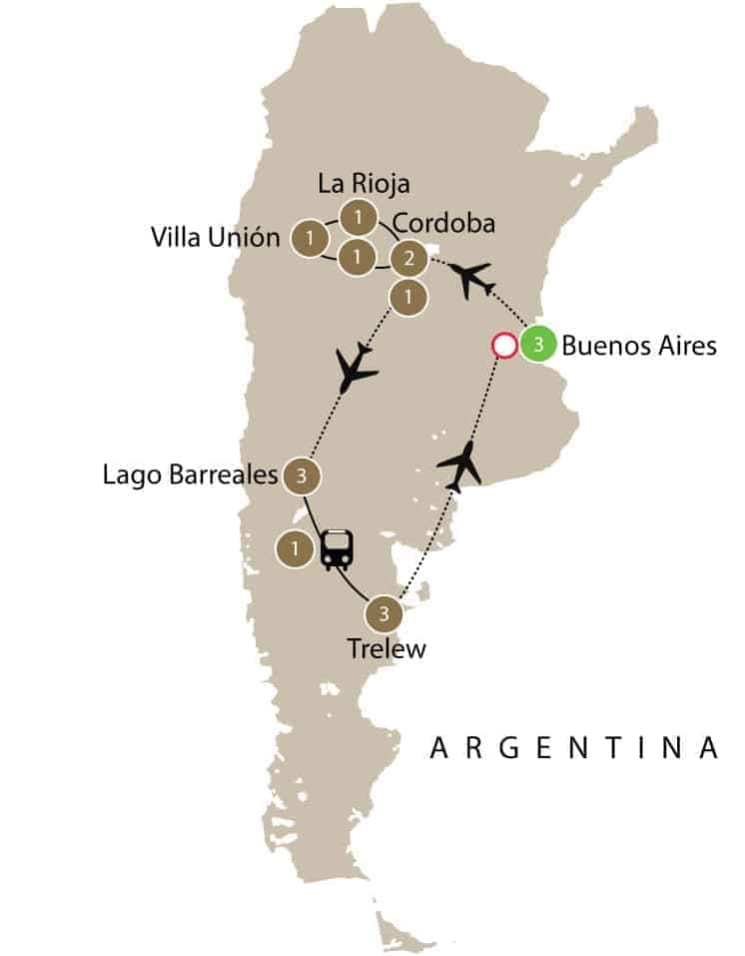
Departure Dates
| Departure Date | Price |
|---|---|
| 10 September 2025 Ends 26 September 2025 • days $20,946 Twin $22,300 Single Available | Selected |
Argentina Dinosaur Dig Small Group Tour
Odyssey offers easy, convenient, and relaxed escorted small group tours to Argentina. We explore Argentina's Dinosaur record, natural beauty, its ancient heritage, and world famous cities, all with some truly spectacular scenery along the way. This and more is all waiting to be explored on one of Odyssey’s small group tours of Dinosaur's designed for the senior traveller, and led by experienced, and enthusiastic like minded people.
Join Odyssey Traveller on this 17-day tour that gives you the opportunity to meet some of the best guides and experts on Argentina’s palaeontological record and dinosaur evolution. You will also have the opportunity to see the largest herbivore and the largest carnivore dinosaurs that ever roamed the planet.
The sites you will visit have made a substantial contribution to the earth’s dinosaur fossil record. During this tour, you also get to participate on a dig, spending three days at the Proyecto Dino Palaeontology Centre. This site is managed by scientists from the National University of Comahue. After the dig you continue to explore further the palaeontological record of Argentina.
The tour visits sites of palaeontological interest around the area of Trelew in the Peninsula Valdés. On this tour, we will learn more about the gigantic herbivores, Titanosaurs. The fossil of a new species of Titanosaur--the largest to date--was uncovered in Argentina only in 2014. The largest dinosaur that walked the planet, the Titanosaur named Patagotitan mayorum was estimated to have been 40 metres long and 20 metres tall, with a thigh bone found to measure more than 2 metres (8 feet)--longer than an average human's height! It was larger than the Argentinosaurus Huinculensis, the previous record holder housed in Carmes Funes Museum that we will see on this trip.
You can check out Odyssey Program Leader John Pickrell's report on the October 2016 Gobi Desert dig, or read an article from The Guardian that describes how the discovery of the Titanosaur in Argentina is changing the way we think about dinosaurs.
Argentina Dinosaur Dig Tour Itinerary
The Argentina Dinosaur small group dig journeys from Buenos Aires out to Cordoba. The tour includes a Visit to Ischigualasto Provincial Park to see the palaeontology history of the park.
The visit to Ischigualasto - Talampaya Natural Parks, is a journey back to the time of the dinosaur. One of the key places you visit on the tour is Ischigualasto, also known as “Valle de la Luna” (Moon Valley), a sedimentary sequence of an amazing diversity of forms and colours shaped by erosion. This valley is considered by many scientists to be one of the world’s most important palaeontological sites.
This small group tour also spends time on site at the Dino Paleontology Project Center, Lago Barreales. Our time here includes a visit to the research area, laboratory, and showroom. We will also visit the Lago Barreales Paleontological Center (CEPALB) or Projecto Dino, on the north lakeside of Barreales lake (Neuquén province). A group of scientists develops scientific, educational, cultural, and tourist activities that the tour also joins.
From our base in Neuquen you visit the Carmes Funes Museum. In this museum you will see a full-size reconstruction of the dinosaur known as Argentinosaurus Huinculensis. Prior to the 2014 discovery we've mentioned above, Argentinosaurus Huinculensis was the biggest herbivorous dinosaur ever discovered. Discovered in 1988, this massive herbivore belongs to the titanosaurids, part of the plant-eating sauropod group. The fossils of Argentinosaurus Huinculensis were discovered about 8 km east from Plaza Huincul. The dinosaur was found in rocks from the late Cretaceous period, but only parts of the skeleton have been uncovered: the pelvis, tibia, sacrum and some vertebrae. This giant dinosaur has been estimated to reach up to 35 metres long.
The museum also has a reconstruction, dioramas, and fossil remains of a great variety of dinosaur bones and eggs, invertebrates, and bird footprints, all discovered in different field trips carried out in Neuquén.
The tour also visits the Paleontological Museum Ernesto Bachman. Exhibits here include a replica of the 100-million-year-old Giganotosaurus Carolinii, considered the biggest carnivore on earth. The discovery which was local to the area was important for two reasons. The sheer size of the dinosaur believed to have weighed at least 8 tonnes. The second important discovery was that scientists recovered 70% of the skeleton. In this museum you’ll also be able to see the palaeontological and archaeological material found in nearby sites. As well as a replica of the Carnotaurus Sastrei, found in the province of Chubut, in 95-million-year-old rocks.
For those with a passion for dinosaurs and the palaeontological record of the planet, this tour will provide a truly unique experience. Odyssey offers a range of Archaeology small group tours to travellers each year you might want to check out. The Argentina Dinosaur dig including Titanosaur is one tour included in the collection for you to enjoy.
You can learn more about Argentina with our country profile. For more details about this tour, click the ‘Top 5’ or ‘Itinerary’ buttons above! If you’re keen to experience this tour, please call or send an email. Or, to book, simply fill in the form on the right hand side of this page.
Gallery
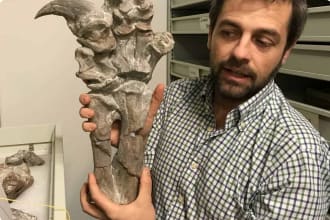
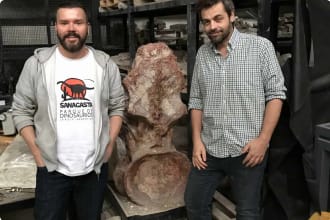
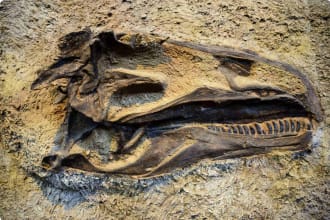
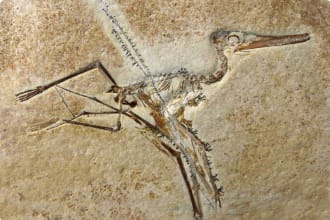
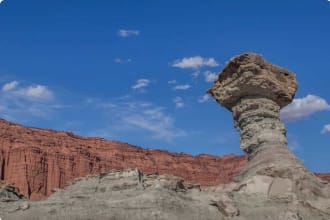
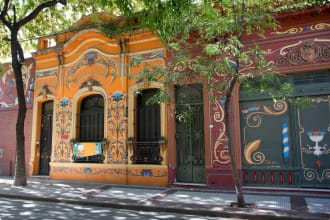
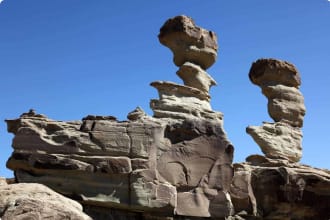

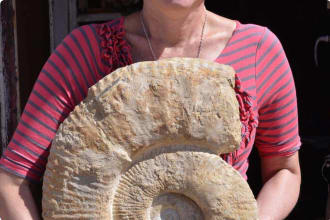
Itinerary
17 days
Day 1: Buenos Aires
Accommodation: Hotel Unique Executive Central or Similar
Upon arrival at Ezeiza International Airport, we make our own way to the hotel, where we meet up with the group for an introductory dinner and program orientation. (D)
Day 2: Buenos Aires
Accommodation: Hotel Unique Executive Central or similar.
After breakfast, we take a half-day guided city tour that includes many of the main attractions of Buenos Aires. Alon the way, we see the Plaza de Mayo, the Presidential Palace (The Pink House), the Metropolitan Cathedral, San Telmo, La Boco, and “Caminito.” We then continue to Puerto Madero and stop off at the Recoleta neighborhood, where we visit the Recoleta Cemetery. The afternoon is free to continue exploring the city at your own pace. We come together again in the evening, for a traditional dinner and tango show. (B,D)
Day 3: La Plata
Accommodation: Hotel Unique Executive Central or similar
After breakfast, we transfer to La Plata, where we visit the city’s Paleontological Museum. Here, we learn about the research finds peculiar to the local area with a local guide, and begin our educational introduction into the fascinating world of paleontology. We then have free time to explore the city, before meeting back for a transfer to Buenos Aires. (B,L,D)
Day 4: Cordoba
Accommodation: American Cordoba Park Hotel or similar
Today we head to Jorge Newbury domestic airport, for a flight to Cordoba city. On arrival, we meet up with our local guide, who will take us back to the hotel. We enjoy free time at the hotel, before coming together for a group dinner. (B,D)
Day 5: Cordoba
Accommodation: American Cordoba Park Hotel or similar.
After breakfast, our local guide will meet us at the hotel and travel with us to the Dr. Arturo Alberto Illia Provincial Natural Science Museum. Here, we enjoy a talk on Dinosaur diversity in Argentina, which focuses on the types of fossils (including skeletons, eggs, footprints, etc.) that have recently been found. We enjoy lunch at a local restaurant, and then travel back to our hotel. (B,L,D)
Day 6: La Rioja
Accommodation: Naindo Park Hotel or similar.
After breakfast, we travel to La Rioja City, stopping for a picnic lunch on the way. (B,D)
Day 7: Villa Union
Accommodation: Pircas Negras Hotel or similar
This morning we head to the Ishigualasto Provincial Park, which encompasses an area of over 63,000 hectares. Here, we stop to see numerous sites of paleontological significance. This is a journey into the heart of the dinosaurs’ landscape. The park, which is also known as “Moon Valley,” features ana amzing diversity of geological forms and colours, and has been shaped in large part by the forces of erosion. Without doubt, Ishigualasto Provincial Park is one of the world’s most important paleontological sites. Today we enjoy lunch at a local restaurant, as well as dinner back at the hotel. (B,L,D)
Day 8: La Rioja
Accommodation: Naindo Park Hotel or similar.
Today, we visit Talampaya National Park to experience various paleontological sites and features on an extensive guided tour of “Canon de Talampaya and Shimpa.” The Park has an area of 215,000 hectares, ad its majoy attraction is its brick-red rock cliffs, with thousands of distinctive shapes carved by erosion. Condors nest in these crevices. We also explore a three kilometre-wide canyon, with breathtaking sandstone formations and 150-metre tall walls. The canyon is rich in precious archaeological remains, such a stone mortars and pre-Columbia petroglyphs. In the evening, we enjoy dinner back at the hotel. (B,D)
Day 9: Cordoba
Accommodation: Amerian Cordoba Park Hotel
After breakfast, we drive to Sanagasta, where we experience the wonders of the Sanagasta Museum and Field Site. Later in the day, we return to Cordoba city, for the chance to explore the local area and find a restaurant of your own choosing. (B)
Day 10: Lago Barreales
Accommodation: Accommodation at the Project Area
This morning, we head to Cordoba Airport for a flight to Neuquen. On arrival, we drive to the Dino Paleontology Project Central at Lago Barreales, some 65 km outside of Neuquen city. Here, we are introduced to the research area, lab, and showroom. We enjoy lunch as a group, and continue our initiation into the research activities taking place at the Futalognko site. The main tasks here are research, recovery of bones and other specimens, as well as cleaning and classifying various dinosaur fossils. We enjoy lunch and dinner at the Project Facilities. (B,L,D)
Day 11: Lago Barreales
Accommodation: Accommodation at the Project Area
Today, we travel to the Barreales Lake. Here, we learn about the Geologic Circuit, and also gain valuable skills in cleaning and classifying dinosaur fossils. While here, we also visit the on-site Museum, which displays many fossils and other treasures. (B,L,D)
Day 12: Lago Barreales - Zapala - Lago Barreales
Accommodation: Accommodation a the Project Area
Today we journey to Plaza Huincul, where we visit the Carmes Funes Museum, which features original fossils and a replica of the entire form of Argentinosaurus Huinculensis. This the biggest herbivorous dinosaur that has ever been discovered. It belongs to the titanosaurids, which are included within the plant-eating sauropod group. This particular specimen was found in 1988, in a site 8 km east of Plaza Huincul, and dates back to the late-Cretaceous period .It was not found as a complete skeleton — only the pelvis, tibia, sacrum and some vertebrae were recovered. The dinosaur has been estimated to reach 131 feet in length, 59 feet high, and weight 100 tonnes. The museum here also shows reconstructions, dioramas and fossil remains of a diverse group of dinosaur bones and eggs, invertabrates and bird footprints, all discovered in different field trips. We then continue on to Zapala, where we enjoy lunch at a local restaurant and visit the famous Marine Museum of Juan Olsacher. (B,L,D)
Day 13: Neuquen - Trelew
Accommodation: Bed Seats on the Night Bus (approx 12 hrs journey)
Today we head for Villa El Chocon, where we visit the Paleontolocial Museum Ernesto Bachman, located 79km south of Neuquen city, on the perimeter of the Ezequiel Ramos Meija Dam. It showcases a replica of the 100 million years old Gigantosaurus Carlinii, considered the biggest carnivore on earth, which was found in the area in 1993. The discovery was important not only due to the size of the dinosaur (roughly 8 tonnes) but also because it recovered almost 70% of the skeleton. In the museum, we see some of the paleontological and archaeological materials found in nearby sites, as well as a replica of the Carnotaurus Sastrie, found in the nearby province on Chubut. In the evening we take a local overnight bus to Trelew. (B,L,D)
Day 14: Trelew
Accommodation: Libertador Hotel or similar
Upon arrival at the Bus terminal in Trelew, we will be picked up and transferred to our hotel. In the afternoon, we walk to the Egidio Furiglio Museum. Here, we enjoy a presentation by the famous paleontologist Dr. Diego Pol, who discovered the worlds´ greatest dinosaur. Afterwards, we head back to the hotel for dinner. (B,D)
Day 15: Trelew
Accommodation: Libertador Hotel or similar
After breakfast we take off for a visit to Valle del Rio Chubut, where we explore the geological and Paleontological attractions at Bryn Gwyn Park, a natural reserve of more than 250 hectares is the first of its kind in South America. We will see fossils such as: armadillo, rodents, dolphins, marsupials, penguins etc. Lunch not included. After visit we will be transferred back to the hotel. Dinner is at own arrangements tonight. (B)
Day 16: Trelew
Accommodation: Libertador Hotel or similar
In the morning we start our full day excursion to Peninsula Valdés – one of the few places in the world that offer you opportunity for you to observe such a wide amount of animals. From June – December it’s also possible to enjoy whale watching in the area. Sea elephants, sea lions, penguins and numerous bird species can also be seen in this giant natural reserve area. We will also visit Punta Norte and the Patagonian ranch San Lorenzo, and enjoy lunch en route in a local restaurant.
Day 17: Trelew
After breakfast, we are transferred to Trelew Airport for a flight to Buenos Aires Aeroparque airport (AEP). We say our farewells and the tour draws to a close.
Includes / Excludes
What’s included in our Tour
- 16 nights of accommodation in hotels, lodges, and project accommodation.
- Meals as mentioned in the itinerary.
- Transport, field trips and excursions as indicated in the itinerary.
- Entrance fees and gratuities.
- Odyssey Tour Leader for the duration of the tour.
- Detailed tour information booklet.
What’s not included in our Tour
- Return economy class international airfare and departure taxes.
- Items of a personal nature such as telephone calls and laundry.
- Comprehensive travel insurance.
- Argentina Visa Fee and Service
Participants must be able to carry their own luggage, climb and descend stairs, be in good health, mobile and able to participate in 3-5 hours of physical activity per day, the equivalent of walking / hiking up to 8 kilometers per day on uneven ground.
Book now
Make it a private tour
Easing your journey
Crossing international borders with restrictions
The list of requirements to travel internationally has changed and will continue to change for several years. Odyssey is here to assist you in managing your way through these requirements:
For more information see our Crossing international borders with restrictions page.
Book With Confidence
If less than 30 days before your tour starts you are unable to travel as a result of Government travel restrictions, Odyssey Traveller will assist you with a date change, provide you with a credit or process a refund for your booking less any non-recoverable costs.
See Terms and conditions for details.
Peace of Mind Travel
The safety of our travellers, tour leader, local guide and support staff has always been our top priority and with the new guidelines for public health and safety for keeping safe for destinations around the world, we’ve developed our plan to give you peace of mind when travelling with us.
See Peace of Mind Travel for details.
Reviews
We were privileged to go where many tourists could not go but some of that was due to the presence of John Pickrell still we saw more and met more senior paleontologists that I had expected. All museums and other sites were a marvelous experience
Participant 2017
All guides were excellent. Each had done a lot of research on dinosaurs before we arrived and had a good sense of what we were after.
Participant 2017
Accommodation exceeded expectations in most cases.
Participant 2017
Well balanced with city vs country, visits to remote dinosaur sites, town museums, a winery. The hands-on dinosaur dig and fossil preparation live-in at Lake Barraleas was superb and I could have spent more time there as we went out a lot. It was excellent with a great Argentinian team looking after us..
Participant 2017
Well balanced, with a great group leader in John Pickrell. He was extremely informative and had great contacts so we saw behind the scenes at museums.We covered a lot of distance but with 2-3 nights in a number of places had plenty of free time to do your own thing.
Participant 2017
Reading List Download PDF
Walking on Eggs: The Astonishing Discovery of Thousands of Dinosaur Eggs in the Badlands of Patagonia
Luis Chiappe (Author), Lowell Dingus (Author)
"Walking on Eggs" is the riveting inside story behind one of the most significant paleontological discoveries in history. In November 1997, Luis M. Chiappe and Lowell Dingus led an elite team of paleontologists and geologists into the rugged and desolate badlands of Argentina. Unsure of what they would find, Chiappe and Dingus knew that this region had produced many spectacular specimens of dinosaurs and fossil birds over the last century. Nothing could have prepared them, however, for the headline-grabbing discovery they were about to make: a massive dinosaur nesting ground covering more than a square mile and littered with tens of thousands of large, unhatched dinosaur eggs.
Containing the first fossils of embryonic dinosaur skin ever found, the eggs gave rise to a host of mysteries. What species laid the eggs, and when? How were they preserved? And most intriguingly, what ancient catastrophe -- deeply rooted more than 70 million years in the past -- prevented them from hatching? In clear, comprehensible language, Chiappe and Dingus frame their scientific investigations within the context of a gripping detective story, illustrating how they used paleontological and geological evidence to establish the identity and age of the eggs, as well as how they established the cause of death. Chiappe and Dingus also recount a return trip to the badlands in 1999 in which they set out to learn more about dinosaur social and reproductive behavior.
Their investigations once again unearthed a key piece of the historic puzzle: the bones of a twenty-foot predatory, carnivorous dinosaur. As they decipher the evidence -- divining origins, discovering identities, and pinpointing possiblecauses of extinction -- Chiappe and Dingus interweave their field adventures with chapters illuminating the crucial precedents behind their groundbreaking work. Complementing the text are beautiful hand-drawn reproductions of what the dinosaurs and their landscape might have looked like, created by an artist who joined the expedition team in Patagonia. Infused with passion and an infectious sense of awe, "Walking on Eggs" illustrates the ups and downs of the scientific process and invites dinosaur lovers of all ages to experience the exhilarating sense of discovery.
Patagonian Mesozoic Reptiles (Life of the Past)
Zulma Gasparini (Editor), Rodolfo A. Coria (Editor), Leonardo Salgado (Editor)
Distant and exotic, Patagonia has been one of the most attractive places for explorers and paleontologists. The amazing diversity of its fauna and flora, the richness of its fossil record, and the variety of its paleoenvironments, all contribute to making Patagonia the focal point for the study of the history of life on Earth. Patagonian Mesozoic Reptiles gathers in a single volume―and for the first time―our current knowledge about the evolution of the region and its reptiles. Each contribution amply demonstrates that Patagonia during the Mesozoic provides a distinct perspective on the evolution of life during a key chapter in the geological history of this region.
Flying Dinosaurs: How Fearsome Reptiles Became Birds
John Pickrell
The discovery of stunning, feathered dinosaur fossils coming out of China since 2006 suggest that these creatures were much more bird-like than paleontologists previously imagined. Further evidence―bones, genetics, eggs, behavior, and more―has shown a seamless transition from fleet-footed carnivores to the ancestors of modern birds.
Mixing colorful portraits with news on the latest fossil findings and interviews with leading paleontologists in the United States, China, Europe, and Australia, John Pickrell explains and details dinosaurs' development of flight. This special capacity introduced a whole new range of abilities for the animals and helped them survive a mass extinction, when thousands of other dinosaur species that once populated the Earth did not. Pickrell also turns his journalistic eye toward the stories behind the latest discoveries, investigating the role of the Chinese black market in trading fossils, the controversies among various dinosaur hunters, the interference of national governments intent on protecting scientific information, and the race to publish findings first that make this research such a dynamic area of science.
The Rise and Fall of the Dinosaurs: The Untold Story of a Lost World
Steve Brusatte
66 million years ago the dinosaurs were wiped from the face of the earth. Today, Dr. Steve Brusatte, one of the leading scientists of a new generation of dinosaur hunters, armed with cutting edge technology, is piecing together the complete story of how the dinosaurs ruled the earth for 150 million years.
The world of the dinosaurs has fascinated on book and screen for decades – from early science fiction classics like The Lost World, to Godzilla terrorizing the streets of Tokyo, and the monsters of Jurassic Park. But what if we got it wrong? In The Rise and Fall of the Dinosaurs, top dinosaur expert Brusatte, tells the real story of how dinosaurs rose to dominate the planet. Using the fossil clues that have been gathered using state of the art technology, Brusatte follows these magnificent creatures from their beginnings in the Early Triassic period, through the Jurassic period to their final days in the Cretaceous and the legacy that they left behind.
Along the way, Brusatte introduces us to modern day dinosaur hunters and gives an insight into what it’s like to be a paleontologist. The Rise and Fall of the Dinosaurs is full of thrilling accounts of some of his personal discoveries, including primitive human-sized tyrannosaurs, monstrous carnivores even larger than T. rex, and feathered raptor dinosaurs preserved in lava from China.
At a time when Homo sapiens has existed for less than 200,000 years and we are already talking about planetary extinction, The Rise and Fall of the Dinosaurs is a timely reminder of what humans can learn from the magnificent creatures who ruled the earth before us.
Weird Dinosaurs: The Strange New Fossils Challenging Everything We Thought We Knew
John Pickrell
From the outback of Australia to the Gobi Desert of Mongolia and the savanna of Madagascar, award-winning science writer and dinosaur enthusiast John Pickrell embarks on a world tour of new finds, meeting the fossil hunters working at the frontier of discovery. He reveals the dwarf dinosaurs unearthed by an eccentric Transylvanian baron; an aquatic, crocodile-snouted carnivore bigger than T. Rex, which once lurked in North African waterways; a Chinese dinosaur with wings like a bat; and a Patagonian sauropod so enormous it weighed more than two commercial jet airliners.
Other surprising discoveries hail from Alaska, Siberia, Canada, Burma, and South Africa. Why did dinosaurs grow so huge? How did they spread across the world? Did they all have feathers? What do sauropods have in common with 1950s vacuum cleaners? The stuff of adventure movies and scientific revolutions, Weird Dinosaurs examines the latest breakthroughs and new technologies radically transforming our understanding of the distant past. Pickrell opens a vivid portal to a brand new age of fossil discovery, in which fossil hunters are routinely redefining what we know and how we think about prehistory’s most iconic and fascinating creatures.
Dinosaurs of the Flaming Cliffs: The Thrilling Account of One of the Largest Dinosaur Expeditions of the 20th Century by the Expedition Leader
Michael Novacek
In 1993, an international team of paleontologists from the American Museum of Natural History and the Mongolian Academy of Sciences, in the fourth year of a multiyear expedition, made one of the most miraculous fossil discoveries in history. They unearthed a treasure trove of Cretaceous dinosaurs and mammals, including several new species, that has already helped to reshape our understanding of the dinosaur age. In Dinosaurs of the Flaming Cliffs, team leader Michael Novacek, Provost of Science of the American Museum of Natural History and Curator of Vertebrate Paleontology, re-creates the day-to-day drama of field exploration over the past six years in the Gobi and recounts his and his colleagues' historic discoveries, reported in front-page headlines across the world. In a remarkable narrative that interweaves expedition chapters with in-depth scientific discussions on the nature and importance of the fossil record, Novacek takes us on a journey that explores the very nature of scientific inquiry and dinosaur research.
Pterosaurs: Natural History, Evolution, Anatomy
Mark Whitton
For 150 million years, the skies didn't belong to birds--they belonged to the pterosaurs. These flying reptiles, which include the pterodactyls, shared the world with the nonavian dinosaurs until their extinction 65 million years ago. Some pterosaurs, such as the giant azhdarchids, were the largest flying animals of all time, with wingspans exceeding thirty feet and standing heights comparable to modern giraffes. This richly illustrated book takes an unprecedented look at these astonishing creatures, presenting the latest findings on their anatomy, ecology, and extinction. Pterosaurs features some 200 stunning illustrations, including original paintings by Mark Witton and photos of rarely seen fossils. After decades of mystery, paleontologists have finally begun to understand how pterosaurs are related to other reptiles, how they functioned as living animals, and, despite dwarfing all other flying animals, how they managed to become airborne. Here you can explore the fossil evidence of pterosaur behavior and ecology, learn about the skeletal and soft-tissue anatomy of pterosaurs, and consider the newest theories about their cryptic origins. This one-of-a-kind book covers the discovery history, paleobiogeography, anatomy, and behaviors of more than 130 species of pterosaur, and also discusses their demise at the end of the Mesozoic. * The most comprehensive book on pterosaurs ever published * Features some 200 illustrations, including original paintings by the author * Covers every known species and major group of pterosaurs * Describes pterosaur anatomy, ecology, behaviors, diversity, and more * Encourages further study with 500 references to primary pterosaur literature
Dinosaurs: How They Lived and Evolved
Darren Naish
From the Victorian golden age of dinosaur discovery to the cutting edge of twenty-first century fossil forensics 'Dinosaurs' unravels the mysteries of the most spectacular group of animals our planet has ever seen. Despite facing drastic climatic conditions including violent volcanic activity, searing temperatures and rising and plunging sea levels, the dinosaurs formed an evolutionary dynasty that ruled the Earth for more than 150 million years. Darren Naish and Paul Barrett reveal the latest scientific findings about dinosaur anatomy, behaviour, and evolution. They also demonstrate how dinosaurs survived the great extinction at the end of the Cretaceous Period and continued to evolve and thrive alongside us, existing today as an incredibly diverse array of birds that are the direct descendants of theropods. 'Dinosaurs' is lavishly illustrated with specimens from the Natural History Museum's own collections, along with explanatory diagrams and charts and full-colour artistic reconstructions of dinosaur behaviour.
